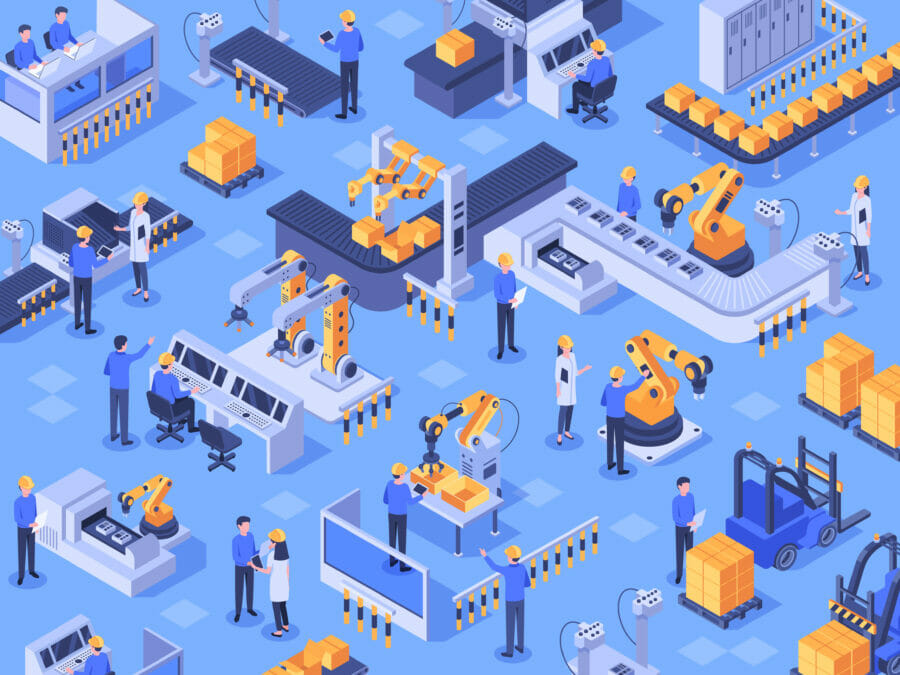Customer expectations have been rapidly changing and accelerated even more during the events of the last year and a half. Those changes, however, started long before the global disruption in 2020, but last year simply gave us a sharper focus. For the last 16 years, the term “Fourth Industrial Revolution” (Industry 4.0) has been used to describe the situation that manufacturers and service providers find themselves in today. There has been a rapid advancement in every aspect of technology that impact all aspects of how people live, work, and function in society. Both manufacturers and service providers are desperately trying to determine what customers expect in the era of Industry 4.0. Is it low cost/high value, asset reliability, ease of use, low effort, great personal relationships, or business model flexibility? Or is it all of the above?
As it turns out, it is all the above, and here is why. Industry 4.0 is defined by the ability to apply transformative technologies to redefine how industrial and service companies interact with their customers. These revolutionary technologies include the industrial Internet of Things, easily accessible analytics, process and manufacturing automation, robotics, digital twin style simulation, and artificial intelligence (AI)-enhanced automated processes and managed workflows. Industry 4.0 is driven by the availability of these technologies, the need to leverage them, boost efficiencies and become more agile. Customers must respond to a market when the competition has access to these remarkable tools as well. In many ways, it is an adoption race, and the first few equipment and service providers will have a huge advantage over their competitors.
Customers are looking at the equipment they need, the way in which it works, how reliable it is, how they can access performance and forecasting data to run scenarios, and more than anything else, how easy it is to do all of that. They are comparing how they interact with their equipment and service providers with how they interact with all other organisations in their personal life.
Call it the Amazon Effect: if I want to find out what I ordered from Amazon in the past 12 months, it is on my phone. The merchandise, the cost, the shipping, when the product was ordered and when it was delivered. I have it, here on my phone. I do not need to call anyone, send a request, or fill out a form.
Same for the Uber effect: I order a service, they give me a cost, I accept it, they take my payment information and preferences, and the order is complete. The next thing you know, I begin to get constant updates on the status of my order, who the driver is, what they are driving, and when they will arrive. If I care about any of this, I can look at it and pay attention to it, or not. It doesn’t matter — the information is there if I want it. Customers are aware that there is an easier way to do business, and they do it every day. They want that connected, reliable, easy, do-it-yourself experience in all aspects of their life.
Information Age roundtable: how to successfully engage customers post-pandemic
I speak with prospects every day that exist in highly competitive markets and face significant and fierce competition, yet they still schedule equipment deliveries and service calls on white boards, coordinate corrective maintenance calls between technicians and customers with telephone calls, and schedule cyclical PM’s by manually re-entering IoT data into spreadsheets. In a way, more power to them — they have been successful and have been able to sell and service complex assets for decades with those systems in place. But how long will customers continue to accept that level of disruption and lack of data visibility in their business?
Ideally, customers want seamless and integrated solutions, as little effort as possible, and as much flexibility as possible. And eventually, they will want the equipment’s output without the effort, expense, and administration of owning the actual equipment, a concept called “servitisation” or outcome-based services. Much of the market is not quite there yet, but they are moving rapidly in that direction.
Equipment manufacturers and service providers need to look at the rapid adoption of transformative technology all around them and evaluate their own operation in comparison to what is available in the market today. How easy or difficult is it to do business with them? How accessible is customer data and transaction history? How difficult is it to order a product or services? That is the key to outcome-based services — the manufacturer or service provider is 100% focused on doing what they do best, making and servicing their equipment.
What customers really want, in the end, is to spend far less time worrying about working on your business and spend all of that time and effort focused on their own business.








